The black-and-orange monarch butterfly (Danaus plexippus) is perhaps the most recognizable and beloved of its kind. Unfortunately, its population is in peril – particularly the dwindling cohort west of the Rockies.
In July 2022, the International Union for the Conservation of Nature categorized the Monarch as “endangered” — two steps from becoming extinct. See 2022 news release.
Its caterpillars can only survive on milkweed (Asclepias), and this habitat continues to be destroyed by development and the use of pesticides.
The bottom line: Plant milkweed. Learn more below.
How do you tell whether a monarch butterfly is male or female?
The male has two black spots on its hind wings. The females do not, and their black “veins” tend to be thicker.
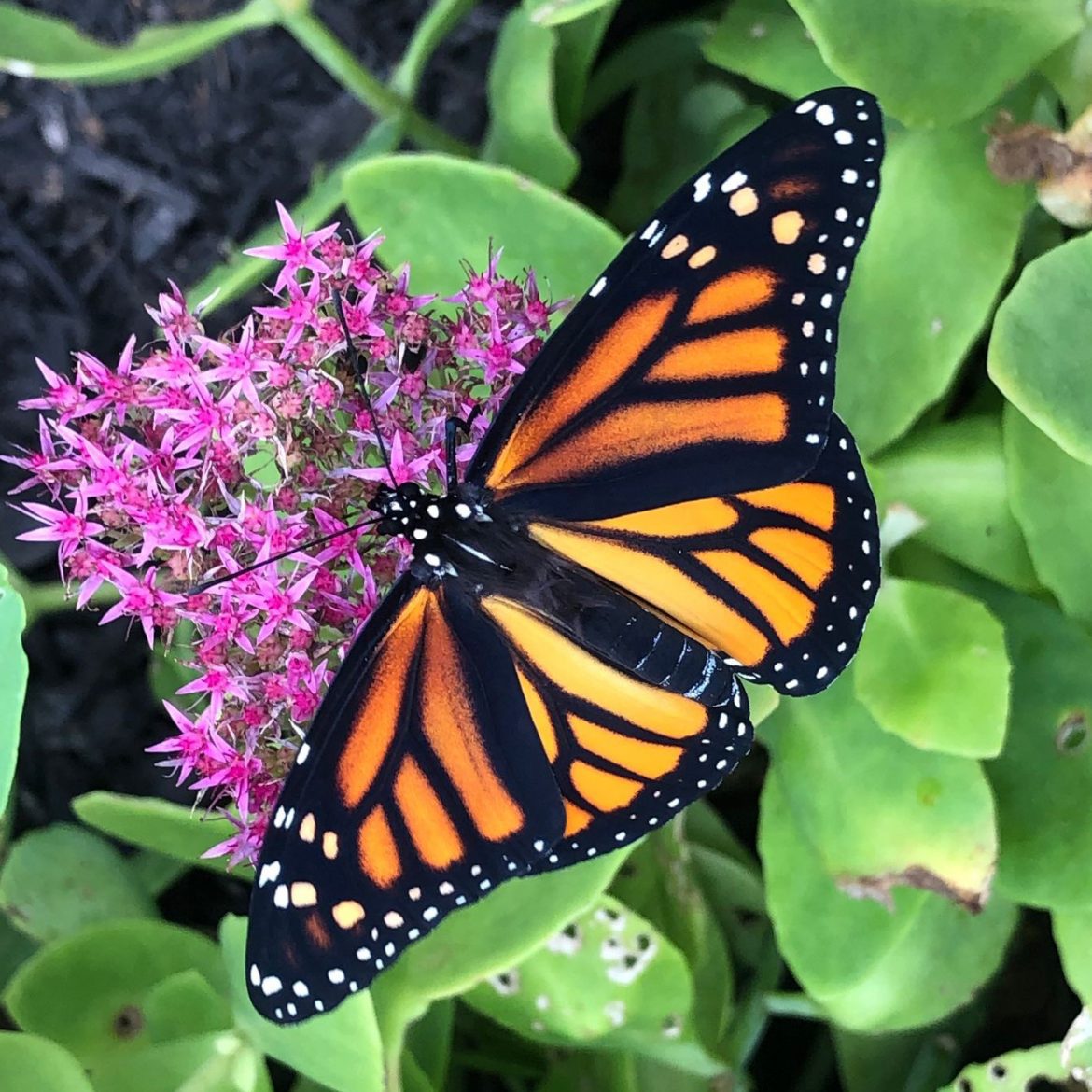
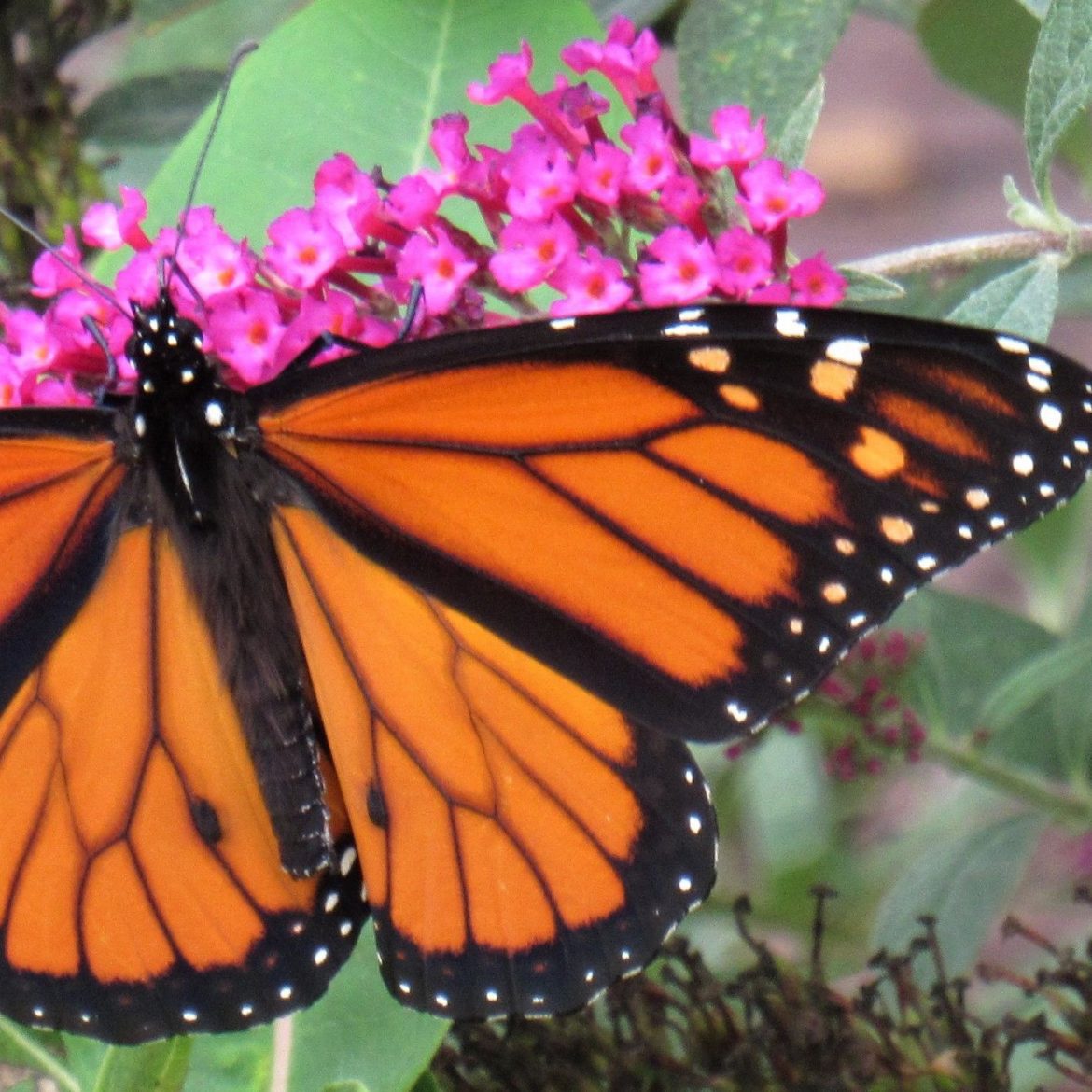
How can I find their eggs? What do they eat?
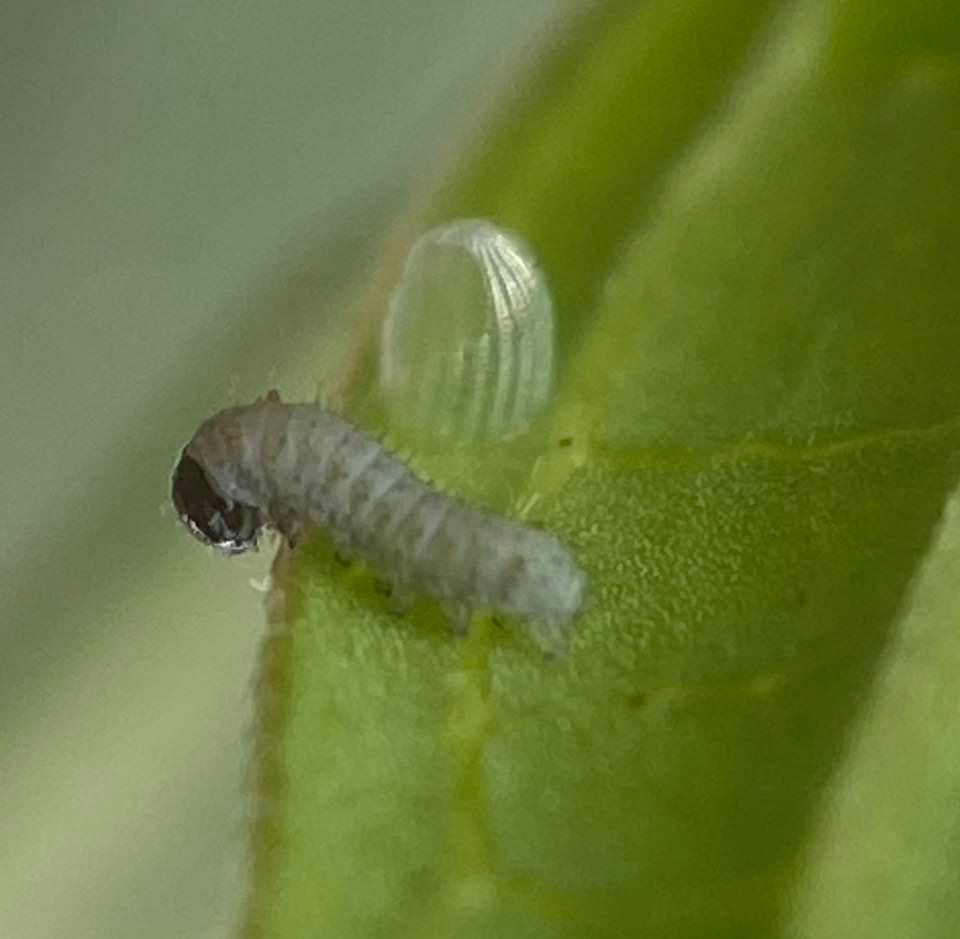
The monarch lays its eggs singly on the leaves of milkweed. Like other caterpillars, the newly emerged larva eats its egg as its first meal before beginning its diet of milkweed leaves, which contain a toxin that will make the caterpillar and butterfly poisonous to predators like birds.
The toxin has no effect on many predators, including praying mantids, parasitic flies and wasps, spiders and assassin bugs, and the monarch is vulnerable at every stage – egg, larva, chrysalis and butterfly. It is estimated that only about 10% of eggs laid in the wild will result in a butterfly.
How do you identify a monarch caterpillar?
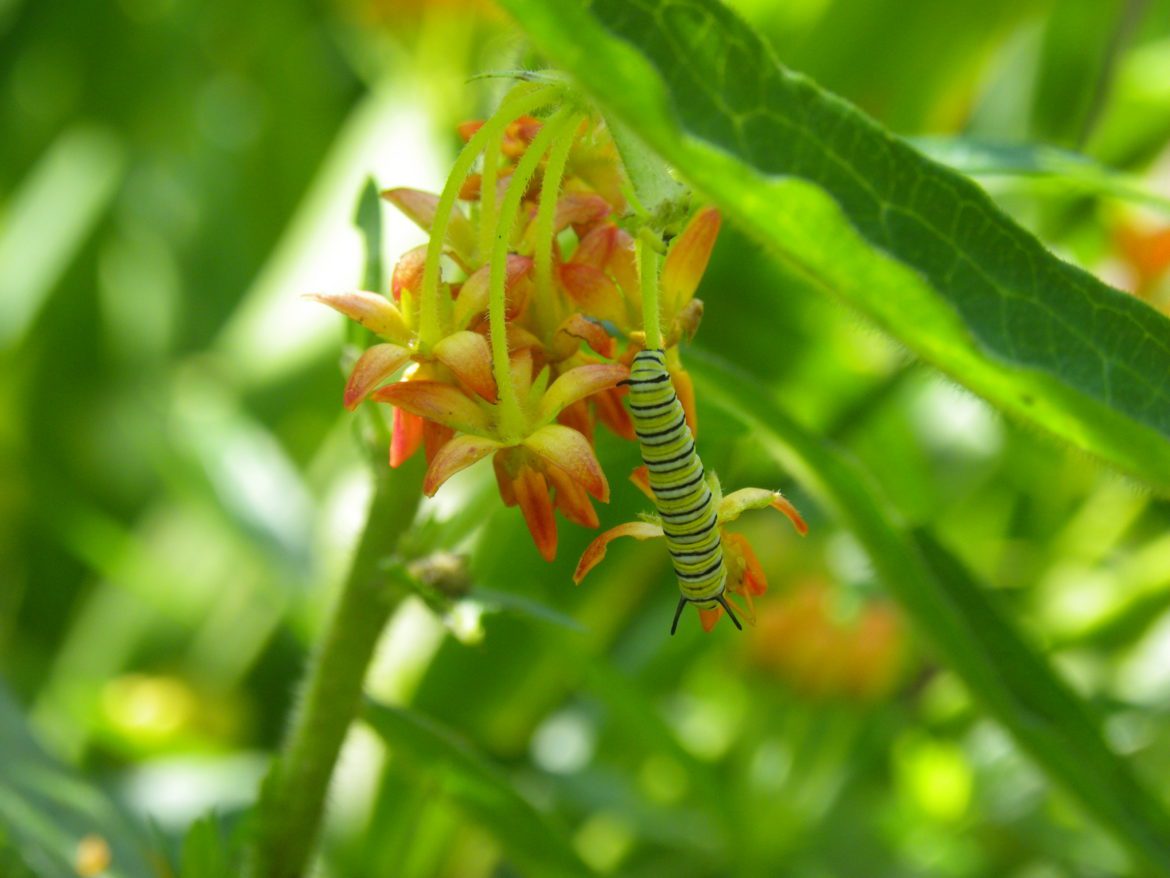
The caterpillar and butterfly both feature what’s called “aposematic” coloring – that is, bright colors that signal to predators that it is noxious.
How do you identify a monarch butterfly chrysalis?
Its chrysalis is green, rimmed with gold flecks. Shortly before the butterfly emerges, it becomes transparent.
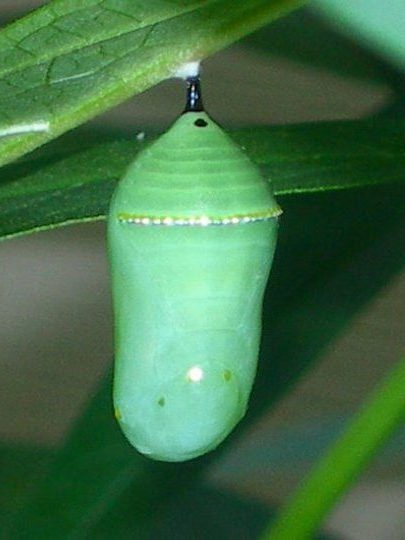
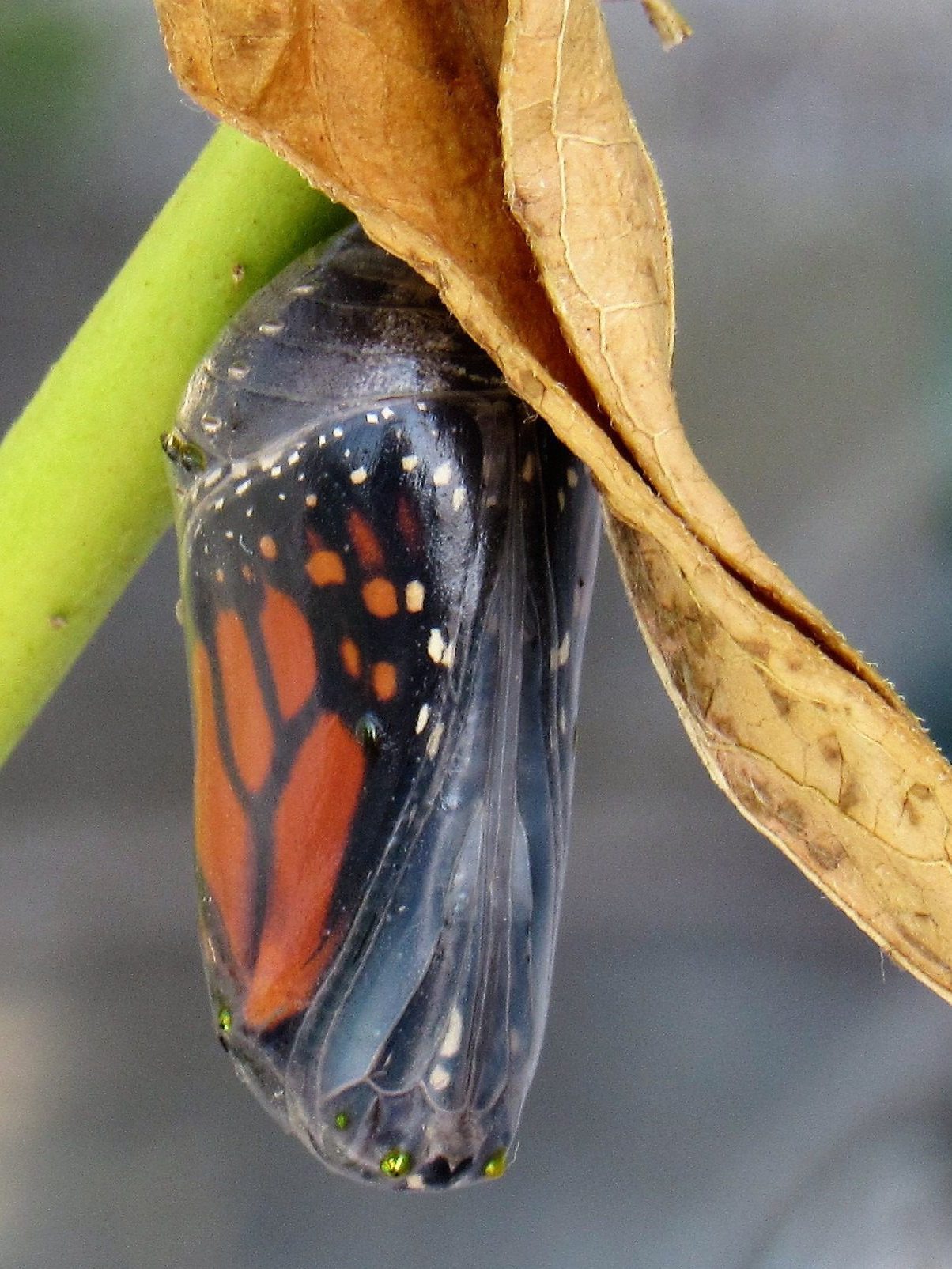
How do monarch butterflies survive the winter? How far do monarch butterflies migrate?
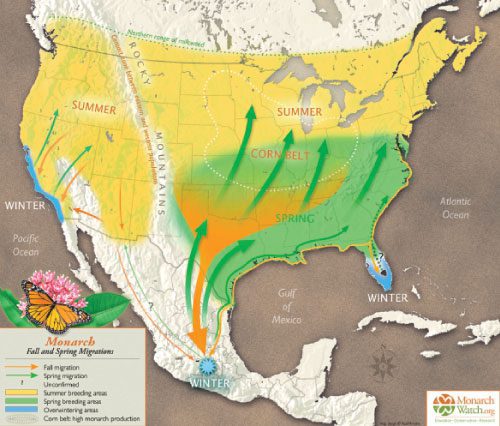
In North America, monarchs are divided into two main groups, east and west of the Rocky Mountains.
Both are famous for their seasonal migration. The first three generations of monarchs born in a season live two to six weeks. But the last generation of the summer lives six to nine months.
During this time, the population east of the Rockies migrates to Mexico. The population west of the Rockies migrates to spots in California and Mexico.
They remain in diapause, or not breeding, until the weather warms, when they begin their reverse migration. No other North American butterfly performs this two-way mass migration.
Monarch Butterflies are In Trouble
Their numbers have been declining in the last several years over much of their North American range.
Why They’re Declining
There are multiple reasons for this decline, including the loss of open meadow habitat that monarch butterflies depend upon for food and successful reproduction. They need habitat – flowers and milkweed – across their migration path, including here in Delaware.
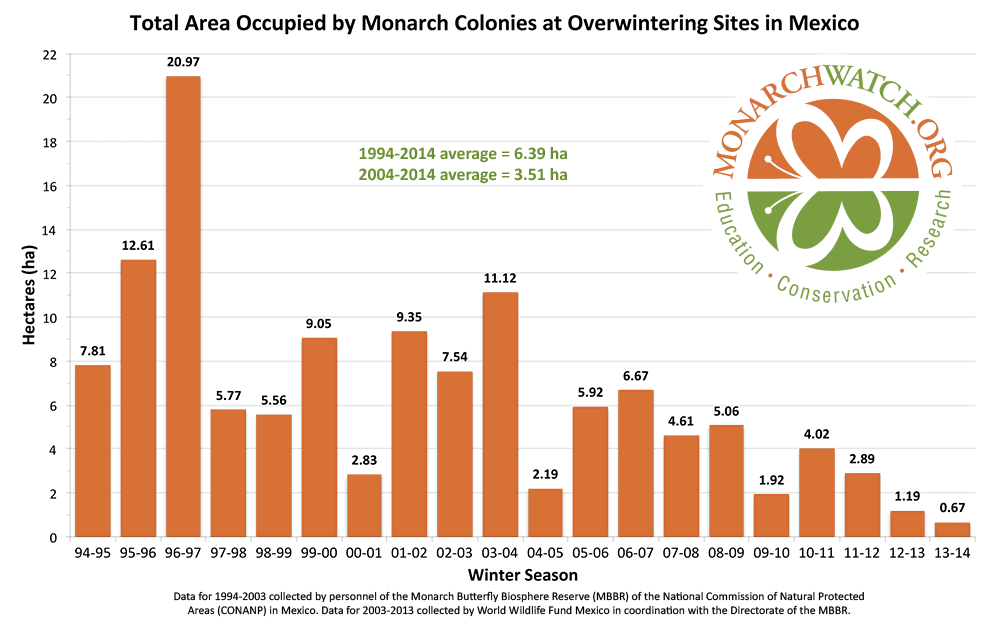
How We’re Helping
Monarch-friendly Meadows
Most of the meadow areas at the locations we operate – Ashland Nature Center, Abbott’s Mill Nature Center, Coverdale Farm Preserve, and DuPont Environmental Education Center – are managed for biodiversity and clean water and thus provide monarch butterflies with the plants they need to survive. Native flowering plants and milkweeds, such as those listed at right, thrive in our fields. We use carefully-timed mowing, controlled burning, and supplemental seeding to increase the amount of milkweed and other flowers that support pollinators in our meadows. Learn about our work on the Monarch Highway Habitat Project.
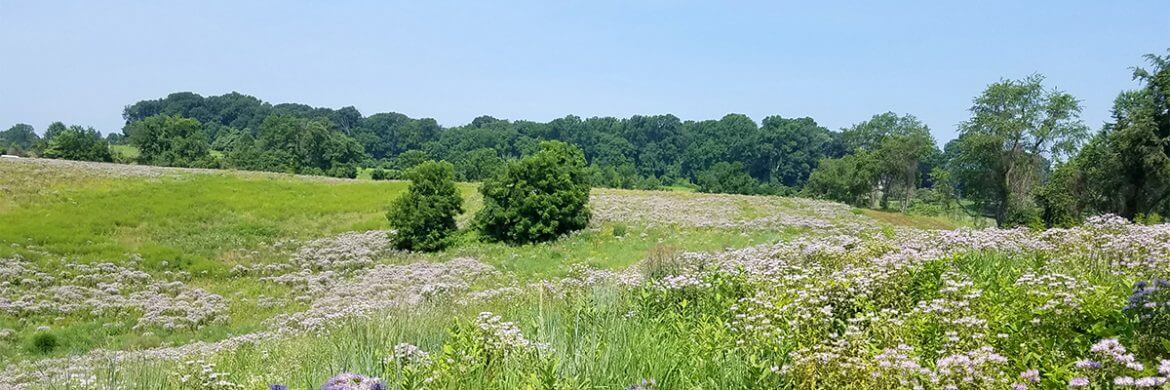
How You Can Help
Plant Milkweed Plants
Milkweed is very important for monarch caterpillars, which feed only on the leaves of the milkweed plant and monarch butterflies lay eggs on their leaves.
Support monarch butterflies with native varieties we recommend:
- common milkweed (Asclepias syriaca)
- swamp milkweed (Asclepias incarnata)
- butterfly milkweed (Asclepias tuberosa)
Buy these plants each spring at our annual Native Plant Sale.
Ashland Butterfly Habitat Garden for Wildlife How We Protect Wildlife